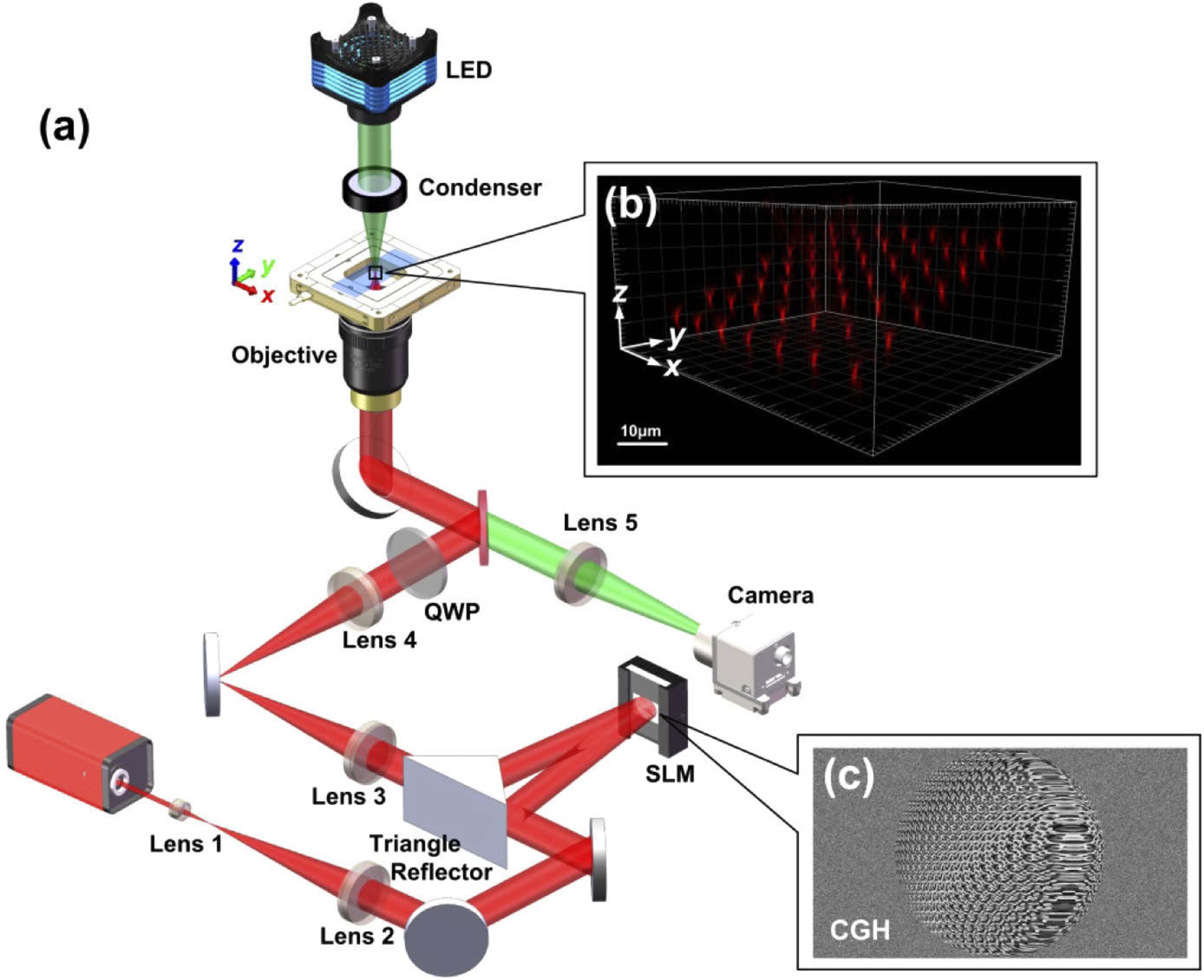
Optical tweezers have emerged as a powerful and flexible tool for manipulating biological and colloidal particles in a non-contact manner. Compared with standard Gaussian single-beam, the holographic optical tweezers provide a more convenient way to produce optical trap arrays. The number and position of foci can be easily varied by changing the computer-generate hologram (CGH).
However, the traditional algorithm used to realize dynamic manipulation of multiple optical traps are confined to the focal plane. Are there any methods to extend the algorithm to 3D space?
A research team led by Prof. Dr. YAO baoli from the Xi'an Institute of Optics and Precision Mechanics (XIOPM) of the Chinese Academy of Sciences (CAS) proposed a new tilted-plane GS algorithm to realize dynamic 3D manipulation. The results were published in Optics Express.

Schematic of the home-built holographic optical tweezers. (Image by XIOPM)
The principle of the tilted-plane Gerchberg-Saxton (GS) algorithm is similar to that of the conventional GS algorithm, in which the desired hologram is obtained by iterating back and forth between the input field in the spatial light modulator (SLM) panel and the target field in the focal volume. Besides, to realize dynamic 3D manipulation, the plane of target field to a general plane is extended.
The algorithm is performed by propagating the beam forward and backward: the two processes numerically calculated by the inverse Fast Fourier Transform Algorithm (FFT) and FFT. By loading the hologram onto the spatial light modulators, the desired field in the focal region is generated.
With this algorithm, a large number of point traps can be generated in a tilted plane with a high uniformity of 94%. Moreover, the algorithm can effectively reduce the problem to a 2D one, thus enabling a dynamic 3D rotation of multiple trapped particles.
The algorithm is expected as a powerful kernel of Holographic optical tweezers (HOT) and can be further combined with other techniques like multifocal confocal microscopy and parallel laser beam micro-fabrication to extend its applications.
The study offers new insights into applications such as tomographic phase microscopy that entails dynamic manipulation of multiple living cells in suspension.

86-10-68597521 (day)
86-10-68597289 (night)

52 Sanlihe Rd., Xicheng District,
Beijing, China (100864)

